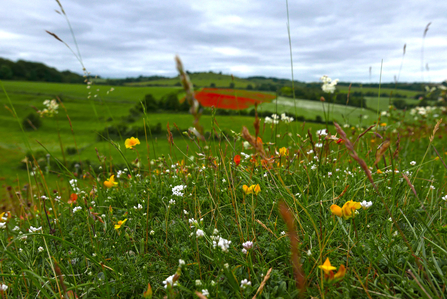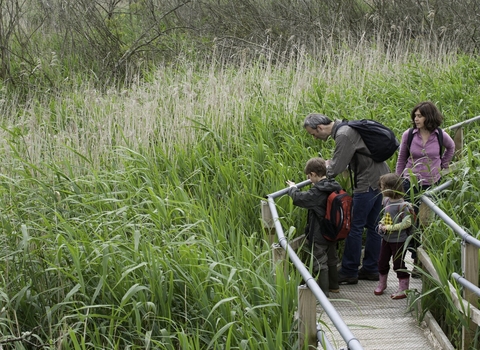We manage over 100 nature reserves across our three counties, covering approximately 3,945 hectares.
Managing a reserve can mean anything from coppicing and scrub clearance, to hay raking, to path cutting, to making plans to restore and create new habitats, as well as providing safe access for visitors.
Each reserve has a unique character and each requires a different type of management. We have meadows, ancient woodlands, fens, chalk grasslands, river margins, old gravel pits and much more!
Your company may wish to support our management work through sponsorship or by providing volunteers (Wild Work Days).

Wildflower meadow North Chilterns Chalk - Robert Enderby
Wildflower meadow management - help protect our meadows
Traditional hay meadows contain a huge diversity of plant species and support an array of invertebrate, bird and mammal species. For centuries traditional hay meadows were a common sight across Britain but since the advent of agricultural intensification they have dramatically declined by 97% and the wildlife that depends on them has suffered. The few that remain have become oases for wildlife. Grazing livestock on meadows help improve the diversity of wildflower species by creating areas of open soil for seeds to set into and reducing the dominance of bulky species. Find out more about wildflower meadows.
Coppicing
Coppicing is a traditional woodland management technique that dates to the Stone Age. It involves felling trees at their base to create a 'stool' where new shoots will grow. Coppicing is primarily a way of improving the health and biodiversity of a woodland. Help us conserve some of our amazing woodlands using these traditional methods.
From time to time there may be opportunities to sponsor infrastructure like tern rafts and bird hides, or electric tools such as brushcutters and chainsaws. Please complete our Sponsor a Project enquiry form to find out more, or get in touch by email at corporates@wildlifebcn.org or call on 01954 713500.

